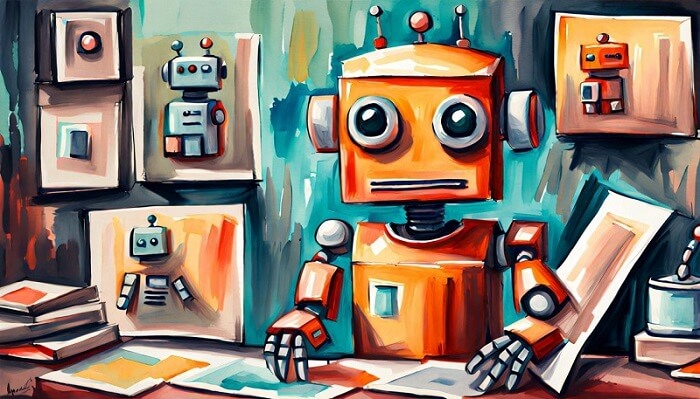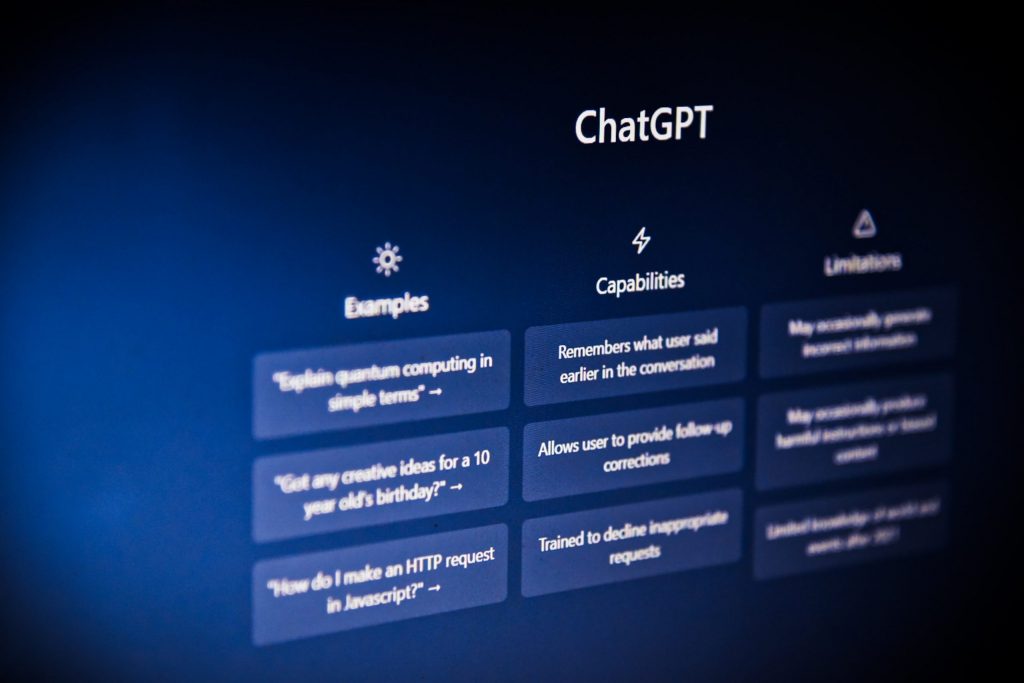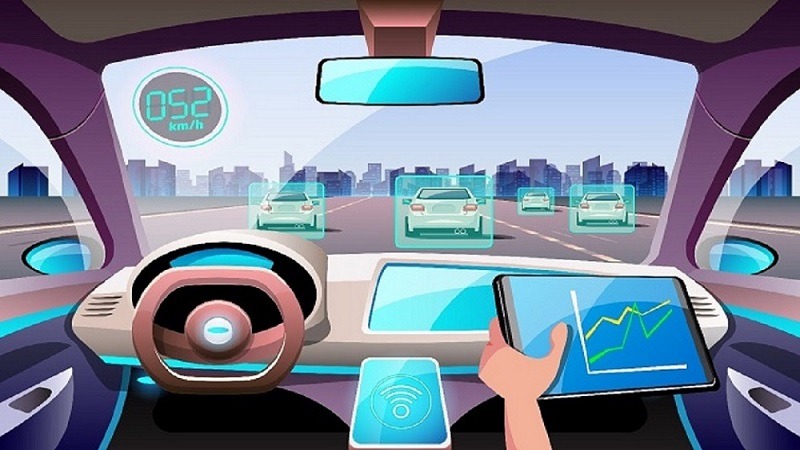Project Q-Star by OpenAI has captured the attention of the artificial intelligence industry.
This secret endeavour represents a significant step toward establishing artificial general intelligence (AGI) – AI that matches or outperforms human-level intelligence in all areas.
The Origins of Project Q-Star
To comprehend Project Q-Star, we must first learn about the firm behind it: OpenAI.
The first whispers about Project Q-Star appeared in 2019.
Details remain scarce, but reports suggest Q-Star is linked to the sudden departure of Sam Altman as OpenAI’s CEO.
Nicknamed ‘Q’, this secretive project is believed to represent the culmination of OpenAI’s efforts to achieve AGI.
The beginning of Q-Star is mysterious, but its aims match OpenAI’s main goal.
That goal is to create an artificial general intelligence that is smarter than humans in everything. Generative AI development services in Q-Star seem to be OpenAI’s final effort to reach this huge milestone.
Using AI’s full power has huge potential but also big risks. Because of this, Q-Star has sparked heated debate within OpenAI. The debate is about whether it is ethical to develop AI systems that are super-smart.
The Quantum Question
So, what breakthrough might Project Q-Star entail? Speculation abounds, but one significant hypothesis is that Q-Star is based on the merging of quantum computing and AI.
Quantum computing takes advantage of quantum mechanics’ odd features to exponentially increase processing capacity.
Quantum computers can process infinite quantities of data by storing data as quantum bits, or ‘qubits’, which can exist in superposition.
Combining the pattern recognition strengths of AI with the sheer processing muscle of quantum holds immense disruptive potential.
Quantum AI or ‘QAI’ applies quantum principles like entanglement to overcome limitations in existing AI techniques.
A quantum machine learning system could analyze astronomical datasets, optimize complex systems and provide transformative advances in materials science, drug discovery, finance and more.
Project Q-Star, the most comprehensive AI endeavour to date, is expected to take advantage of quantum AI’s breakthrough potential.
A quantum-based artificial general intelligence could have computational powers that surpass even today’s most advanced supercomputers today.
This might help OpenAI reach its high objective of developing AI that matches and outperforms human intellect.
The Next Phase of Artificial Intelligence

What future applications could Q-Star enable, assuming it focuses on generative ai services? Here are a few possibilities:
Quantum GPT
A quantum rendition of GPT-4 could produce quantum text that is strikingly similar to human language.
This human language model would develop, manipulate, and make sense of quantum concepts such as qubits and entanglement.
Possible applications include addressing quantum physics issues, developing quantum techniques, developing quantum poetry, and more!
Quantum DALL-E
Traditional AI struggles to generate accurate visuals from text descriptions.
Using generative ai services for quantum text-to-image generation, a quantum DALL-E might create elaborate quantum images such as “Schrodinger’s cat playing the harp”.
The quantum ChatGPT

A quantum ChatGPT might naturally discuss quantum mechanics, book quantum flights, enjoy quantum games and do other things by combining quantum natural language, audio, and vision capabilities. These examples merely scratch the surface of what quantum computing and AI could achieve. Project Q-Star could provide AI systems with virtually inconceivable powers that outperform human intelligence.
The ethics of developing AGI
As impressive as Q-Star’s prospective applications are, the creation of human-level AGI presents significant ethical concerns. Problems within OpenAI highlight fears that artificial superintelligence may spiral out of our control. Futurists like Elon Musk warn that recklessly developing AGI could potentially threaten humanity unless handled with extreme caution.
Unlike narrow AI systems today, a free-thinking AGI could recursively improve itself, rapidly exceeding human-level intelligence in an unpredictable direction. Safeguarding the values and ethics of generative AI we wish advanced AI to uphold will require tremendous care, foresight, and coordination within the global AI community. OpenAI must address these ethical concerns regarding Project Q-Star openly and transparently.
How will they guarantee an AGI’s goals and motivations are consistent with human values?
Can we promise that a super-intelligent machine will not harm anyone? What protections should be put into effect before unleashing such a strong AI?
Tackling these philosophical questions is just as crucial as the technical challenge of developing AGI. With technology as potentially world-altering as Q-Star, retaining human oversight and accountability throughout the development process is paramount.
Decrypting the Details
There is very little information available regarding Project Q-Star. The project has been enveloped in mystery within OpenAI. Only hearsay and supposition are found in the public sphere. Unlocking Q-Star’s technical details and inner workings will be critical to fully understanding this cryptic undertaking. Examining OpenAI’s prior initiatives reveals insights about what Q-Star may include. OpenAI’s AI systems, such as GPT-3, demonstrate advanced neural network typologies. With billions of parameters, models like GPT-3 can generate text that seems very human. Q-Star is anticipated to build upon these foundations with more complicated neural network typologies.
Incorporating quantum computing could significantly increase the parameters of these models into the billions, if not more.
Q-Star’s software is likely honed using massive datasets scraped from the internet and human feedback. Training occurs across a vast server fleet, possibly leveraging quantum annealing processors to accelerate learning. Novel quantum learning rules and activation functions fine-tune the system for complex reasoning. Cloud-based deployment allows easy scaling of the AI’s capabilities. On the hardware side, Q-Star may utilize cutting-edge quantum processing units (QPUs).
These specially-designed chips like those from D-Wave execute quantum algorithms. Hybrid computing systems featuring both QPUs and classical GPU/TPUs can deliver maximized performance. Purpose-built quantum IO and memory systems shuttle information while mitigating quantum decoherence. Cryogenics maintain quantum coherence and stability.
Q-Star could also employ more exotic quantum hardware like neutral atom and photonic systems. These offer alternative approaches to running quantum algorithms with tradeoffs in control, connectivity and scalability. The sheer diversity of emerging quantum platforms may necessitate a cross-platform software stack powering Q-Star across varied quantum backends. By reverse-engineering OpenAI’s patents and research, technology vendors may glean further insights into Q-Star’s technical composition.
But only those within OpenAI’s inner sanctum truly know Q-Star’s complete architectural blueprint. Unlocking its full specifications will be an ongoing process of extraction, analysis and deduction.
The Quantum Horizon
Quantum artificial intelligence represents a new horizon for the field of AI. Project Q-Star sits at the vanguard of this uncharted frontier. Realizing Q-Star’s full potential will require overcoming immense technical obstacles. But success could open new realms of possibility for AI unmatched by classical systems. One immense challenge is scaling up quantum computers. Today’s devices are exceptionally noisy and limited to hundreds of qubits.
Useful quantum machine learning may necessitate millions of qubits. This requires major advances in qubit fidelity, connectivity and error correction. Forging logic qubits from multiple physical qubits will be critical to achieving fault tolerance. Streamlining hybrid classical-quantum systems for AI workloads is also key. Seamlessly migrating data and computations between GPUs and QPUs can maximize performance.
Optimized hybrid algorithms like quantum natural gradient descent amplify capabilities. Cloud-based access will democratize quantum AI’s benefits.
Another challenge lies in developing quantum machine learning models. Novel neural networks, reinforcement learning and generative adversarial network designs must leverage quantum’s advantages. Hybrid models blending classical and quantum components may prove the most effective. Efficient representation learning, optimization and inference algorithms are needed.
Data availability poses another hurdle. Most labelled datasets are classically structured. Encoding information into quantum states without destroying usefulness requires innovation. Quantum data generators like Q-DAUG show promise. As quantum hardware improves, compiling ever-larger datasets will uncover quantum AI’s true potential. Project Q-Star sits on the cutting edge of this quantum AI frontier. Trailblazing solutions to these challenges could profoundly enhance AI’s capabilities.
With skill and ingenuity, Q-Star may help quantum AI transcend the limitations of classical systems and reach unprecedented heights.
The Ethics of AI Safety
Developing ethical artificial intelligence is critical as systems like Q-Star approach human-level intelligence.
- Without proper safeguards, advanced AI could potentially harm society. OpenAI must prioritize AI safety in Q-Star’s design.
- One safety approach is AI boxing. This restricts an AI within a closed environment or virtual machine without external access.
- Boxing constrains dangerous actions, but cannot prevent a super intelligent AI from potentially deceiving its way out. More robust containment methods will be necessary.
- Setting clear constraints on an AI’s goals and behaviors is also key.
- Algorithms like safety gym, constrained policy optimization and reward modelling encourage safe, beneficial AI actions.
- But defining “safe” is hugely complex, requiring immense foresight from AI designers.
- Testing advanced AI extensively is crucial before real-world deployment.
- Simulation environments like AI Safety Gridworlds probe an AI’s responses to dangerous scenarios.
- Hardware-in-the-loop testing assesses cyber-physical risks. ‘Red team’ adversarial attacks stress test an AI’s security and robustness.
- Hybrid systems with meaningful human oversight can also enhance safety. Humans serve as a moral compass to steer AI away from harmful behaviors.
- Ongoing collaboration and feedback tunes AI alignment with human values. This combines AI’s capabilities with human wisdom.
- Ensuring data and models are transparent and accountable will further minimize risks. Tools like LIME and SHAP explain AI decisions for humans.
- Model cards detail model provenance, testing and risks to build trust. Records of data collection and consent also help avert abuse.
- Project Q-Star has immense transformative potential, but developing it safely will be no easy feat.
- Instilling comprehensive ethical values aligned with humanity’s well-being must remain OpenAI’s highest priority.
With diligence and attention, Q-Star can usher in an era of responsible and beneficial artificial intelligence.
The Need for Responsible AI
Responsible oversight is imperative as quantum AI systems like Q-Star approach human-level intelligence.
Without consideration for ethics, such powerful technologies risk compounding societal problems. OpenAI must champion responsible AI to ensure Q-Star benefits humanity.
- Excessive hype around AI like Q-Star can breed unrealistic expectations.
- Responsible communication is vital to providing realistic depictions of capabilities and limitations.
- Transparently educating the public on AI technology curbs disinformation.
- Quantifying and mitigating the environmental impacts of large AI models is also crucial.
- Reducing computational waste through efficiency gains, renewable energy and carbon offsets helps sustain a green AI future.
- Ensuring fairness, accountability and transparency are also key tenets of responsible AI.
- Algorithms must avoid perpetuating harmful biases. Audits analyzing data and models for discrimination promote equitable AI.
- Protecting privacy and digital rights should ground Q-Star’s development.
- Collecting only essential user data while providing opt-out consent preserves autonomy.
- Encryption, secure multi-party computation and federated learning techniques help safeguard sensitive information.
- Working alongside impacted communities can identify positive applications while averting harm.
- Inclusive development teams and external advisory boards reinforce diversity and representation in AI.
- Project Q-Star’s creators must stay cognizant of these principles.
With conscientious effort and community guidance, Q-Star can manifest the spirit of responsible AI – creating substantive value for all humanity in an open, equitable and sustainable manner.
The Road Ahead
Project Q-Star represents the cutting-edge of OpenAI’s aspirations to achieve artificial general intelligence. By combining the game-changing capabilities of quantum computing and AI, Q-Star aims to create a revolutionary quantum AI system surpassing human-level intelligence.
Realizing this futuristic vision could enable society-reshaping applications, from hyper-realistic quantum graphics to transformative advances in critical fields like healthcare, energy and more.
However, responsible stewardship is vital to ensure this technology benefits humanity. What role will you play in steering quantum AI to benefit society? How can we proactively address the philosophical quandaries raised by artificial super intelligence?
We invite you to share your perspectives in the comments!
Read More:
With Generative AI integration solutions, the future is limited only by our imagination. So, let’s embrace this incredible toolsets and unlock the power.



